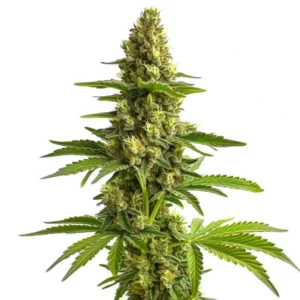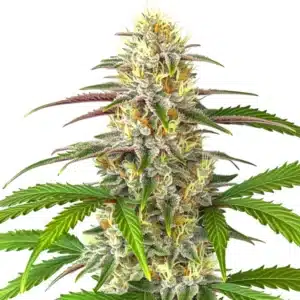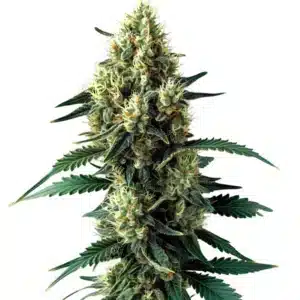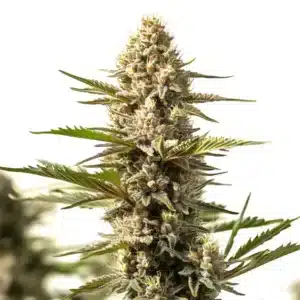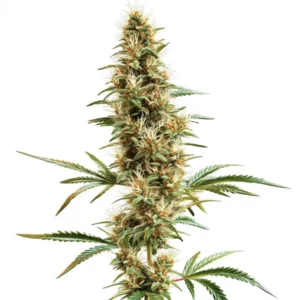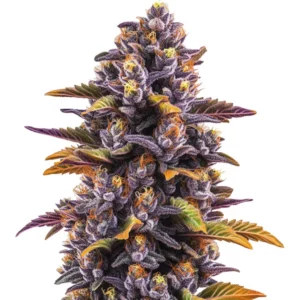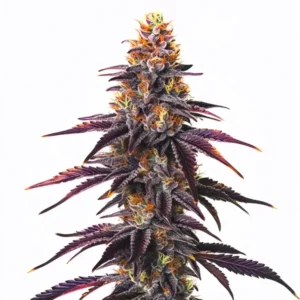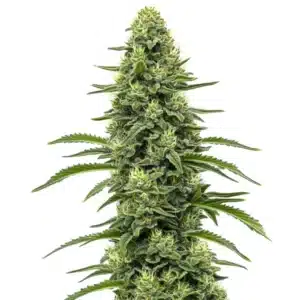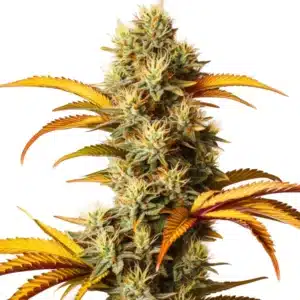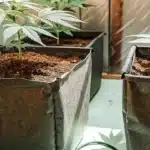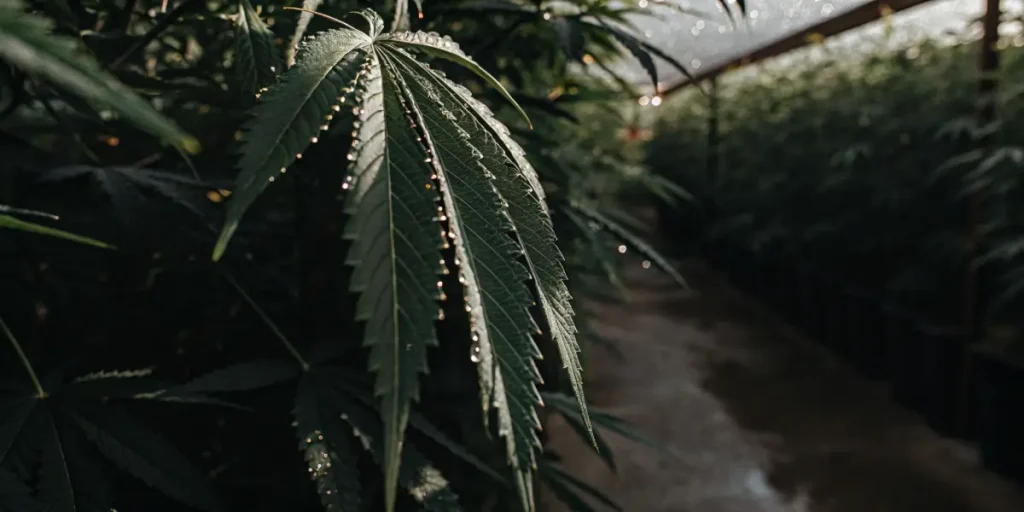
Why Cannabis Leaves Sweat and What It Means
Cannabis enthusiasts, both new and seasoned, sometimes notice their plant’s leaves appear to sweat. This phenomenon can be puzzling but it’s an important part of your plant’s life cycle. When you see droplets on the leaves, it’s not just water. This moisture plays a key role in the plant’s health and function.
Leaf sweating is a natural occurrence, often tied to how your cannabis plant breathes and processes water. Just like humans sweat to regulate temperature, cannabis leaves release moisture to manage internal conditions. This process is called transpiration. Through tiny pores known as stomata, plants release excess water, helping them to cool down and maintain balance.
Recommended Strains
Gelato
|
|
THC | 27% (High) |
|
|
Type | Feminized |
|
|
Yield | High |
|
|
Phenotype | 50% Indica / 50% Sativa |
Bruce Banner #3
|
|
THC | 20% - 29% (High) |
|
|
Type | Feminized |
|
|
Yield | Medium |
|
|
Phenotype | 50% Indica / 50% Sativa |
It’s essential to understand why cannabis leaves sweat and what it means for your growing practices. Noticing this moisture can alert you to changes needed in your cultivation methods. It might affect how you water your plants, adjust environmental conditions, or choose the right strains like Pineapple Express or Gelato from Blimburn Seeds.
Causes of Sweating in Cannabis Plants
Several factors contribute to why cannabis leaves release moisture. Most commonly, it’s the plant’s way of staying cool and maintaining nutrient flow. Environmental conditions like humidity and temperature greatly influence this process. In a hot, dry room, sweating might increase as the plant works harder to cool itself.
Another reason for leaf perspiration is nutrient uptake. As water evaporates from the leaves, it creates a suction effect that pulls water and nutrients from the roots upwards. This cycle is vital for the plant’s growth, enabling it to transport essential minerals efficiently. If you’re growing strains like Bruce Banner 3, proper nourishment is crucial.
Knowing cannabis leaf perspiration is crucial for optimal growth. By recognizing the causes of sweating in cannabis plants, growers can make informed decisions about their cultivation environment. By tailoring conditions to the specific needs of different strains, you can optimize both the health and yield of your plants.
Environmental stressors such as high temperatures or poor air circulation can exacerbate sweating. Monitoring these factors closely can help identify the root causes of sweating issues. Implementing solutions like improved ventilation or temperature control can significantly enhance plant health and productivity.
Promos & Deals
Effects of Leaf Sweating on Cannabis Health
Leaf sweating can be a sign of a healthy plant. It indicates that the plant is actively engaging in transpiration, which is necessary for nutrient uptake and temperature regulation. However, excessive sweating might point to issues such as overwatering or poor ventilation.
When there’s too much moisture, it can lead to conditions like mold or mildew, especially if airflow is restricted. It’s essential to balance environmental factors to ensure the health of your cannabis plants. Strains like Pineapple Express thrive well with adequate moisture management.
Excessive leaf sweating can also lead to nutrient imbalances. When plants transpire too much, they may lose essential nutrients faster than they can be replenished. This can result in deficiencies that affect growth and development, highlighting the importance of knowing the effects of leaf sweating on cannabis health.
Maintaining the right balance of moisture is critical. Over-sweating can contribute to root rot and other moisture-related problems. By closely monitoring environmental conditions, growers can ensure that their plants remain healthy and productive, avoiding the pitfalls of excessive moisture.

Significance of Moisture on Cannabis Leaves
Knowing cannabis leaf perspiration helps growers fine-tune their cultivation techniques. By monitoring leaf sweating, you can adjust watering schedules and air circulation to prevent problems. Pay attention to leaf color and texture; they often signal if the plant is stressed from too much or too little moisture.
Real-life examples can illustrate this point. Imagine a grower noticing consistently wet leaves on their Gelato plants despite moderate watering. This could be a cue to check the grow room’s humidity or ventilation. Adjusting these factors can prevent potential health issues.
The significance of moisture on cannabis leaves cannot be overstated. Proper moisture levels contribute to the overall vigor and resilience of the plant, enabling it to withstand various stressors. By knowing why cannabis leaves sweat and what it means, growers can better manage their cultivation practices.
Effective moisture management can also enhance the quality of the final product. Plants that are well-balanced in terms of hydration tend to produce more potent and flavorful buds, maximizing the grower’s efforts. Thus, the importance of maintaining appropriate moisture levels is pivotal to successful cannabis cultivation.
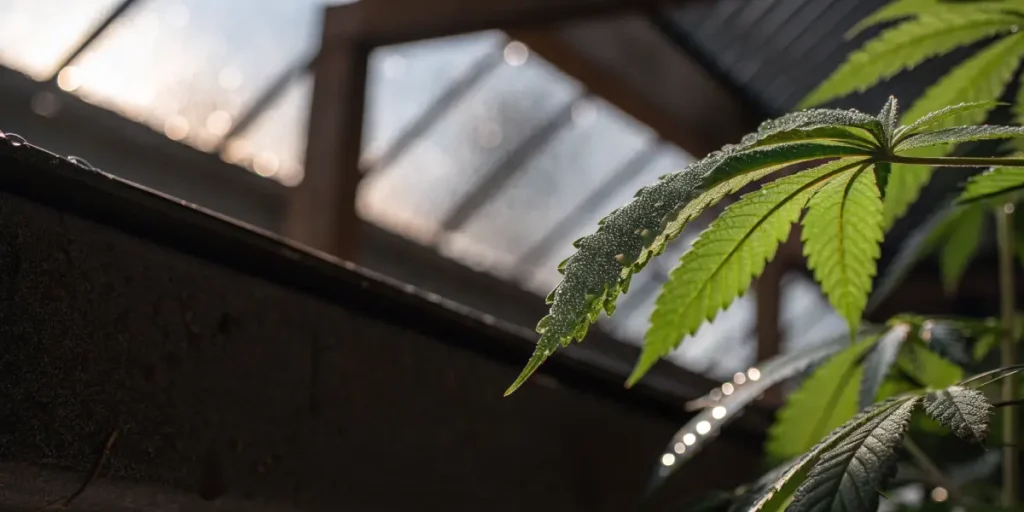
FAQs About Why Cannabis Leaves Sweat and What It Means
What are the main reasons for cannabis leaves sweating?
Leaf sweating in cannabis is primarily due to transpiration, a process where plants release moisture to regulate temperature and transport nutrients. This is a natural and essential function that helps the plant stay healthy and grow. Factors like temperature and humidity levels in your grow room can significantly influence how much your plant sweats.
When conditions are too hot or too dry, your cannabis plant may increase its transpiration rate to cool down. This is especially common in strains like Pineapple Express, which thrive under well-regulated environmental conditions. Keeping an eye on your grow room’s climate can help you manage leaf sweating effectively.
Additionally, certain stages of growth may influence why cannabis leaves release moisture. For instance, during flowering, plants may transpire more to support increased metabolic activity. Knowing these growth stages can help growers anticipate and manage changes in transpiration rates.
Likewise, the genetic characteristics of different strains can affect their sweating tendencies. Some strains are naturally more resilient to environmental fluctuations, while others may require more precise management. Recognizing these traits can aid in selecting the right strains for your grow conditions.
How can I tell if my cannabis plant is sweating too much?
Excessive moisture on leaves can indicate over-sweating, which might be caused by high humidity or poor air circulation. If your plant’s leaves appear constantly wet and sticky, it could be a sign to check your grow room’s ventilation. Adequate airflow prevents mold and mildew, which can damage your plants.
Observe your cannabis plant closely. If you notice signs of over-sweating, like drooping leaves or discoloration, it might be time to adjust your environmental controls. Strains like Bruce Banner can handle a fair amount of moisture, but it’s crucial to maintain balanced conditions for optimal growth.
Other indicators of excessive sweating include slowed growth or unusual leaf curling. These signs suggest the plant is under stress, which can lead to more severe issues if not addressed promptly. Regular monitoring and adjustments are necessary to keep your plants thriving.
Using tools like hygrometers and thermometers can provide valuable insights into your grow room’s conditions. By keeping track of these variables, you can make informed decisions to optimize your cannabis plant’s health and prevent over-sweating.
Can leaf sweating affect the potency of my cannabis?
Leaf sweating itself doesn’t directly impact the potency of your cannabis. However, the conditions that cause excessive sweating, like high humidity, can lead to issues such as mold, which might affect the overall health and yield of your plant. Healthy plants produce better-quality buds.
Maintaining optimal conditions ensures your plants can focus energy on producing potent flowers. Strains such as Gelato require careful environmental management to reach their full potential. Keeping an eye on leaf sweating is just one aspect of maintaining a healthy grow environment.
While sweating doesn’t alter cannabinoid or terpene profiles, the stress from poor environmental conditions can. Stress can trigger unwanted chemical responses, potentially reducing the quality of the harvest. Thus, managing leaf sweating is part of a holistic approach to cultivation.
Regularly inspecting your plants and environment helps maintain the desired potency levels. By ensuring your plants are not subjected to adverse conditions that cause excessive sweating, you can safeguard the quality and yield of your cannabis harvest.
How can I manage leaf sweating in my grow room?
Managing leaf sweating involves controlling your grow room’s climate. Ensure your space has proper ventilation to allow fresh air circulation. This helps regulate temperature and humidity, reducing the risk of excessive sweating. Fans and exhaust systems are useful tools in achieving this balance.
Watering practices also play a crucial role. Overwatering can exacerbate sweating issues. Stick to a schedule that matches your plant’s needs, and consider the specific requirements of the strains you’re growing, like Pineapple Express. Adjustments based on observation will aid in maintaining the right conditions.
Implementing a dehumidifier can be effective in maintaining optimal humidity levels, especially in environments prone to high moisture. This equipment can help prevent over-sweating and maintain a healthy grow space.
Training techniques, such as pruning or topping, can also enhance airflow within the canopy, mitigating issues related to leaf sweating. By ensuring light and air reach all parts of the plant, you can reduce the likelihood of moisture-related problems.
Should I be concerned if my cannabis leaves aren’t sweating?
If you notice your cannabis leaves aren’t sweating at all, it may be a sign of a problem with transpiration. This could be due to closed stomata, often caused by overly dry conditions or nutrient deficiencies. Ensuring your grow room environment is neither too dry nor too nutrient-poor is essential.
Healthy plants should exhibit some level of moisture release. If strains like Bruce Banner aren’t showing any signs of sweating, evaluate your watering and feeding practices. Adjusting these can help restore the natural balance and ensure your plant is thriving.
A lack of sweating might also suggest issues with root health or soil composition. Compacted soil can restrict water uptake, leading to reduced transpiration. Regularly checking the root zone can help identify and address potential problems.
Adopting a proactive approach to plant care, including regular soil testing and nutrient management, can prevent issues that impact sweating. By knowing why cannabis leaves sweat and what it means, growers can create an environment where their plants can flourish.



